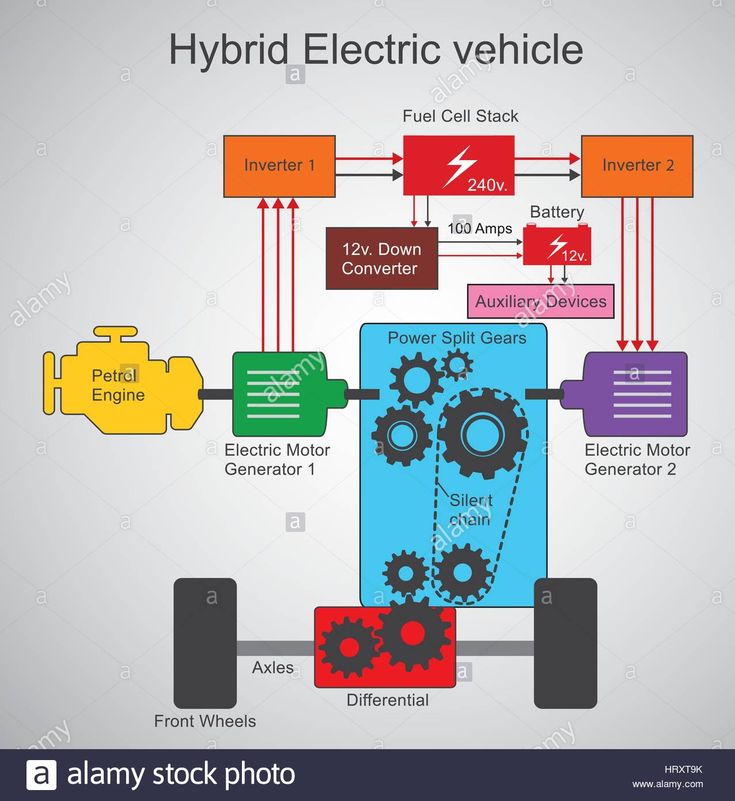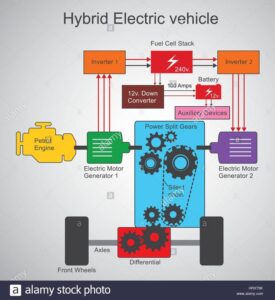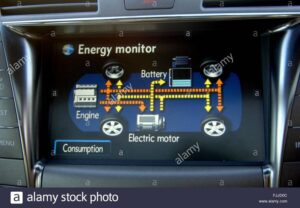Car Hybrid Systems | How Hybrid Cars Work, Types & Advantages
👇
🚗 Table of Contents
-
Introduction – Understanding Car Hybrid Systems
-
What Is a Hybrid Car System?
-
How Hybrid Cars Work
-
Types of Hybrid Systems
-
Advantages and Disadvantages of Hybrid Cars
-
At What Speed Do Hybrid Cars Switch from Battery to Petrol?
-
Top Hybrid Car Models & Prices (2025 Updated)
-
Popular Hybrid Brands – Toyota, Honda, and More
-
Plug-in Hybrid Electric Vehicles (PHEVs)
-
Easy Maintenance Tips for Hybrid Cars
-
Common Technical Issues and How to Fix Them
-
Eco-Benefits of Driving Hybrid Cars
-
People Also Search For
6 Types of Car Hybrid Systems | How Each One Works
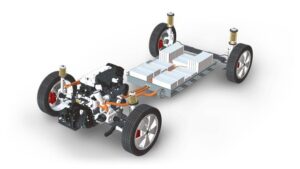
Welcome to technicalreader.com 🚗
If you’re a passionate car driver or someone who just loves learning about vehicles, you’ve probably always been curious about how car hybrid system actually work. How do these smart systems balance electric and petrol power so smoothly? What happens when something goes wrong, and how can you fix it without breaking the bank? These are the kinds of questions that every smart and responsible driver asks — and today, you’re going to get all the answers in one place!
In this post, we’ll take you deep into the fascinating world of car hybrid system — explaining how these systems function, what makes them unique, and why more and more drivers are switching to hybrid vehicles every year. From fuel-saving innovations to eco-friendly engineering, hybrid cars are reshaping the future of driving.
You’ll also learn about different types of car hybrid system, their advantages and disadvantages, and how brands like Toyota, Honda, and Hyundai are setting new standards in automotive technology. Plus, we’ll talk about hybrid car prices, technical performance, and maintenance tips to help you make smarter decisions whether you’re driving one now or planning to buy in the future.
So, buckle up! 🚘
Let’s explore the amazing world of car hybrid system, discover how they work, and find out why they’re the perfect blend of power, performance, and planet-friendly innovation.
What Is a Hybrid Car System?
In simple words, a car hybrid system combines two power sources — a gasoline engine and an electric motor — to create a smart, fuel-efficient drive. A car hybrid system allows your vehicle to run on electric power at low speeds and switch to gasoline when you need more strength, giving you the best mix of performance and economy.
The real magic of a car hybrid system is how smoothly it transitions between the two modes. While driving in the city, the electric motor often takes the lead to save fuel and reduce emissions. On highways, the engine steps in, ensuring consistent power. This makes the car hybrid system perfect for drivers who want both efficiency and performance.
Although it sounds like cutting-edge technology, the car hybrid system has actually been around for decades. Renowned brands like Toyota, Honda, and Hyundai have spent years improving the car hybrid system to make it more reliable, affordable, and powerful — perfect for modern drivers who care about sustainability and innovation.
How Hybrid Car System Work
A hybrid car system is all about teamwork — the electric motor and the gasoline engine work together intelligently.
Here’s a simple breakdown:
-
Starting and Low-Speed Driving:
The electric motor powers the car using energy from the battery. This means zero fuel usage and quiet operation. -
Acceleration or High-Speed Driving:
When you need more power — for example, during highway driving — the gasoline engine kicks in to help. -
Regenerative Braking:
This is one of the coolest features! When you brake, the energy that’s normally wasted as heat is captured and stored back into the battery. -
Cruising:
Both systems can work together for balanced power and efficiency.
Essentially, hybrids are designed to think for you — automatically switching modes to optimize performance and fuel savings.
Types of Car Hybrid Systems
Hybrid technology comes in several variations. Let’s explore the main ones:
1. Full Hybrid (HEV)
Full hybrids, like the Toyota Prius, can run on the electric motor, the gasoline engine, or both. They don’t need to be plugged in — the battery charges automatically through regenerative braking.
2. Mild Hybrid (MHEV)
Mild hybrids use a smaller electric motor to assist the engine. They can’t drive on electric power alone, but they improve efficiency and reduce emissions.
Example: Honda Civic Hybrid.
3. Plug-In Hybrid (PHEV)
Plug-in hybrids are a bridge between hybrids and full EVs (Electric Vehicles). They have larger batteries and can be charged via a plug. You can drive short distances on pure electric mode — perfect for city commutes — and rely on the gas engine for longer trips.
Example: Toyota RAV4 Prime, Hyundai Tucson Plug-in Hybrid.
Advantages of Hybrid Cars System
Let’s talk about the good stuff — what makes hybrid cars so appealing:
-
Fuel Efficiency:
Hybrids use less fuel than traditional vehicles, especially in city driving where stop-and-go traffic allows the electric motor to take charge. -
Lower Emissions:
By relying more on electric power, hybrids produce fewer pollutants and greenhouse gases. -
Regenerative Braking:
Energy is recycled instead of wasted — improving efficiency and battery life. -
Quiet and Smooth Ride:
The electric motor makes hybrids smoother and quieter to drive, especially at low speeds. -
Less Engine Wear:
Since the engine isn’t working constantly, it tends to last longer.
Disadvantages of Hybrid Cars
Of course, no system is perfect. Here are a few downsides to consider:
-
Higher Initial Cost:
Hybrids tend to be pricier than traditional gasoline cars due to advanced technology and batteries. -
Battery Replacement Costs:
Hybrid batteries can be expensive to replace after years of use (though many now come with long warranties). -
Complex Maintenance:
The dual power system can make maintenance more complicated than standard vehicles. -
Performance Trade-Off:
Hybrids focus more on efficiency than raw power.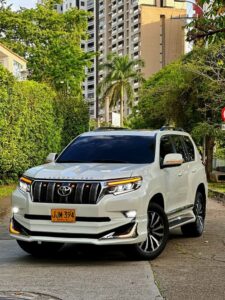
What Is a Hybrid Car Toyota?
When people think “hybrid,” they often think Toyota — and for good reason. Toyota has been leading hybrid innovation since launching the Prius in 1997.
Popular Toyota hybrid models include:
-
Toyota Prius – The pioneer of hybrids.
-
Toyota Camry Hybrid – Blends comfort with performance.
-
Toyota RAV4 Hybrid – A family-friendly SUV with outstanding mileage.
-
Toyota Corolla Hybrid – Affordable and efficient.
Toyota’s Hybrid Synergy Drive system is considered one of the most reliable and efficient in the world, automatically managing energy between the motor and the engine.
Plug-In Hybrid Electric Vehicles (PHEVs)
PHEVs offer the best of both worlds — you can charge them at home like an EV and still have a gas engine for longer trips.
Here’s how they differ from regular hybrids:
-
Larger battery packs allow longer electric-only range (usually 25–50 miles).
-
You can charge them with standard home outlets or public stations.
-
Once the battery depletes, the gas engine takes over seamlessly.
Popular examples:
-
Toyota Prius Prime
-
Hyundai Ioniq Plug-in Hybrid
-
Kia Niro Plug-in Hybrid
PHEVs are ideal if you drive mostly short distances but still need the flexibility of gas for road trips.
At What Speed Do Hybrid Cars Switch from Battery Power to Petrol Power?
This varies by model, but generally, most hybrids switch from electric to petrol power between 25–45 mph (40–72 km/h).
For example, in a Toyota Prius, the electric motor handles low-speed driving (like city traffic). Once you accelerate or maintain higher speeds, the petrol engine starts assisting for better performance.
Modern systems can blend both power sources so smoothly that most drivers hardly notice the transition.
Hybrid Car Prices
Prices vary depending on the brand, type, and region, but here’s a rough range (as of 2025):
| Category | Example Models | Approx. Price Range (USD) |
|---|---|---|
| Mild Hybrid | Honda Civic e:HEV | $25,000 – $30,000 |
| Full Hybrid | Toyota Prius, Hyundai Elantra Hybrid | $27,000 – $35,000 |
| Plug-In Hybrid | Toyota RAV4 Prime, Kia Niro PHEV | $35,000 – $45,000+ |
While hybrids cost more upfront, the savings on fuel and lower maintenance often balance it out over time.
People Also Search For
Let’s explore and answer some popular related questions 👇
Advantage and Disadvantage of Hybrid Car
Hybrids are eco-friendly and fuel-efficient but can cost more initially. They’re best suited for city driving where electric mode is used often.
What Are the Disadvantages of a Hybrid Car?
Mainly cost and complexity. Batteries are expensive, and maintenance requires specialized knowledge. However, reliability has improved in recent years.
How Hybrid Cars Work
Hybrid cars use both gasoline and electric power to move. A computer decides which source to use for the best efficiency.
What Is a Hybrid Car Toyota?
Toyota’s hybrids, like Prius and Camry Hybrid, use the company’s advanced Hybrid Synergy Drive for excellent fuel economy and performance.
Plug-In Hybrid Electric Vehicle
PHEVs can be charged and used as EVs for short distances and switch to petrol for long trips.
Hybrid Car Price
Prices start around $25,000 for mild hybrids and can go up to $45,000+ for plug-in models.
At What Speed Do Hybrid Cars Switch from Battery Power to Petrol Power?
Usually between 25–45 mph (40–72 km/h), depending on the car model and driving conditions.
Plug-In Hybrid Cars List
Some top options:
-
Toyota Prius Prime
-
Kia Niro PHEV
-
Hyundai Tucson Plug-in Hybrid
-
Ford Escape Plug-in Hybrid
-
Volvo XC60 Recharge
Future of Hybrid Car Systems
Hybrid systems are evolving fast. New models are becoming smarter, with improved battery efficiency, longer electric ranges, and better integration with AI-based driving systems.
According to the U.S. Department of Energy (AFDC) and Car and Driver, hybrid technology will continue to play a major role even as full electric vehicles grow in popularity. For many consumers, hybrids remain the perfect middle ground — practical, efficient, and reliable.
As battery tech improves and costs drop, we can expect even more affordable hybrids with EV-like performance in the coming years.

